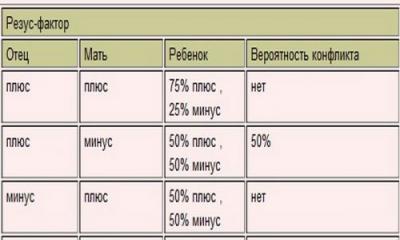Lebedev's opening for domestic tourists, extreme lovers and supporters active rest little known yet. This unique development is striking in its simplicity of design, safety and versatility. The invention itself is only 10 years old, but those who have already become acquainted with the advantages of this innovation are unlikely to give it up.
There are now three types of portable fires on the free market. Basically, they differ only in power. Devices with flames of 20, 30 and 50 cm are sold in stores, but the manufacturer offers to make custom options with a fire up to 2000 mm. All commercially available models are designed for 120 min. work.
Appearance, design and content
The smallest Lebedev fire is an 80 mm cone, with a bottom diameter of 75 mm and a weight of 170 g. The walls of the cone are made of ordinary foil. The other two models have the shape of a cylinder with dimensions of 140x100 and 300x100 mm and a weight of 0.7 and 1.5 kg, respectively. The tubes are made of tin. All three products are paper-wrapped with recommendations and instructions for the user. The wrapper comes off easily if you pull on a special thread. There is a special hole on the bottom side of the product, which is designed to create a natural draft, which contributes to a good oxygen supply and maintaining a given flame level.
To light the phyto-free candles, it is necessary to tear off the protective paper circle, under which a surprise awaits us. At first I did not understand what was hidden inside the sleeve, but then I discovered that it was an emergency supply of matches wrapped in paraffin cloth. Portable fires are set on fire at the top and after 3-5 minutes they give an even flame. Inside is a mixture of various hard paraffins and sawdust. When ignited, the filler starts to melt and, supported by natural draft oxygen, releases vapors. These vapors glow almost like natural gas.
When using the invention, it is necessary to adhere to certain safety measures. The sleeve gets very hot during operation, and therefore it must be placed on a fireproof stand. The smallest variation fits optimally into a travel mug, the average model of the Lebedev candle of 0.3 / 2 and 0.5 / 2 modifications can be placed on the ground, in a bucket, plate, and so on. Bonfires are extinguished with earth, water, snow, or by covering them with a flat metal object. After extinguishing, the device should not be touched for a while so that the paraffin hardens. The cinder can be ignited and extinguished until the filler in the cylinder is depleted.
Advantages and disadvantages of cartridges
Strengths:
- All three options for autonomous light and heat sources are extremely convenient for transportation, storage and use. Containers with paraffin wax can be dropped, hit, sprinkled with water, and nothing will happen to them. They can even be transported on airplanes, buses, and trains. The only thing that should not be done is to break the integrity of the foil walls of the small cones and the tin walls of the large and medium cylinders.
- Resistant to sharply low and high temperatures, wind, water and snow. Filtered candles work equally well at +30 and -50 degrees Celsius. They withstand strong enough wind gusts, average rain and snowfall.
- The solid fuel cartridge provides more heat and light than a touring gas stove, not to mention explosive gasoline, kerosene or dry alcohol.
- When the filling mixture is depleted, the foil or tin can be thrown away, rather than taken home, as is the case with tourist burners.
- The development can be used for decorative (fire shows, street racers track, festivals and picnics in nature, landscape illumination), rescue and repair purposes, heating.
- If you go on a short hike, then, in principle, you can stock up on small lights that weigh almost nothing and do not take up much space in your backpack. However, for long hikes it is easier to stock up on cylinders. In this case, it is difficult to complete your backpack with large and medium sleeves.
- When heated in closed rooms or tents, it emits a specific smell.
- In a camping trip far from civilization, it is easier to buy or refuel gas cylinders than to find still little-known devices.
- Unlike the tile, which already has a divider and a stand for the boiler, an outdoor candle requires additional equipment to cook food on it.
We draw a conclusion
After all of the above, it becomes clear that Lebedev's small fires can be a good substitute for burners on short hikes. Medium and large stand-alone light and heat sources are good if you are traveling, hunting or fishing by car.
The size of the cartridge is 0.3 / 2 in size and is ideal for heating and lighting the meadow during a picnic and rest. Fans of wild rides and impromptu cross-country competitions, street racing or free-ride, orienteering will be able to quickly mark the track and create a suitable atmosphere with the help of the Lebedev 0.5 / 2 candle - this super-tenacious useful life hack.
In all three charges, the declared height of the flame lasts about 90-100 minutes, and then it starts to burn not so high. Unlike a burner, large sleeves provide the ability to quickly warm up in the event of frostbite or give a distress signal.
In a word, the products deserve attention and have already proven themselves quite well among tourists, fishermen and rescuers. You can buy fire of all three Lebedev sizes with delivery across Russia in our online store.
Such a camping candle will help you quickly build a fire, with which you can easily cook food and boil water in field conditions.
There are times when you urgently need to make a fire, and the firewood is either absent altogether, or soaked from the rain and is in no way suitable for making a fire. In these cases, this camping candle will help you out. A kind of analogue of dry alcohol for tourists.
Its advantages:
- - does not take up much space in the backpack,
- - will not leak, since it does not have liquid fuel,
- - easy to manufacture and does not require expensive components,
- - waterproof and will not damp, which is very important,
- - shelf life is not limited,
- - safe, since it is not explosive and does not self-ignite,
- - long burning time, which is great for cooking.
What do you need to make a candle?
- - tin can;
- - any corrugated cardboard from boxes;
- - paraffin candles, household candles or briquettes of paraffin or wax.
- - ordinary scissors or a round knife as in my case, a ruler, a pencil, a container for melting paraffin.

Making a long burning camping candle
We take a tin can, put it on cardboard. This is necessary in order to determine the width of the strips into which we will cut the cardboard. There are two indicators here: if you take the width of the cardboard slightly wider than the can, then the flame will burn more intensely, and if less, then the combustion will be slightly worse, but more economical. It's up to you to decide which goals to use. I took the cans a little wider.In general, cardboard will act as a wick in this candle.


Cut corrugated cardboard strips.

We fold these strips into a "snail" and insert the jar.


You do not need to insert tightly, rather everything should be free. Just put the twisted round.

We take a ladle or pan. We put candles or paraffin briquettes. We melt on fire.

Since I took candles - wicks float in paraffin. You can remove them, they are not needed.
Pour paraffin into a jar with cardboard in several parishes.

We fill it for the first time and wait a little while the paraffin (wax) flows down the can and is absorbed into the cardboard. Then we repeat several times until the jar is completely filled.



At the final stage, we insert a wick made from the same cardboard into the center. With it, you can quickly light a candle.
Leave to cool. Despite the size, it will take a long time.


Candle tests
I'll put a pot of water on top of the bricks and put a candle on the bottom. In field conditions, you can take long cans instead of bricks.I saw an article, I am citing for you for general development, so to speak. so they know how to warm themselves on a long hike.
Fire Lebedev 0.2 / 2 (aka Lebedev's Candle, aka a fuel cartridge in the form of a long-flame candle) is a powerful source of heat and light with a flame height of 0.2 m. It is not afraid of rain, cold, wind and bad weather. Suitable for hiking, hiking and survival.
They can: make a fire even from raw wood (burning time 2 hours), warm up (without any firewood and fire), cook hot food, boil water, dry wet things, give an alarm or distress signal, warm up the engine crankcase, use as a torch and many many others. It is especially useful in rainy and frosty weather - after all, Lebedev's fire does not depend on temperature and humidity! In other words, Lebedev's Fire is almost like a "pocket fire", which is very useful for a frozen tourist.
Lebedev's fire is a special case with solid fuel inside, which is ready to light up at any moment. Technologically, this is a "cartridge", "loaded" with solid fuel (compressed paraffin), which is not afraid of weather conditions and is not sensitive to temperature.
Thanks to a special manufacturing technology, it is mechanically strong and, even if broken into small pieces by a hammer, will burn without losing a single calorie of heat. Like all hard paraffin candles, it does not require special storage conditions, is explosion-proof and suitable for transportation by any type of transport. The Lebedev candle can be transported and stored in any position - it will not spill out, leak or break, like liquid fuel or a cylinder from a gas burner.
Lebedev's fire does not emit odors and does not take up much space - it can be carried in the trunk of a car as a backup heat source. It will not spill like a can of gasoline and spoil the upholstery of a car with a smell. For car enthusiasts, a Lebedev candle is a fire and warmth in any weather. This is a light during repairs, or an emergency fire sign if you suddenly get up on the side of the road at night.
Also Lebedev's Fire is suitable for fishermen and tourists. A fire in a mug or in a small saucepan can be placed on the bottom of a rubber or any other boat, raft, or multi-person tent. Lebedev's fire does not require batteries or a recharging source, which compares favorably with lanterns. It is perfect for subglacial fishermen: after all, in almost every story about winter fishing The common thread is the need for a reliable, portable and all-weather source of heat and light. The Fire ignites and burns at any negative temperature.
Use on open air or in large, well-ventilated areas. Positioned as a portable fire and a long-flame outdoor candle.
Specifications:
- Flame height - 0.2 m.
- Burning time - 2+ hours
- Weight - 0.2 kg
- Sleeve diameter - 75 mm
- Sleeve height - 80 mm
- Composition: a mixture of hard paraffins, wood sawdust.
- Store at temperatures from -50 to +30 degrees (at storage temperatures above +30 degrees, a slight softening of the product is possible without loss of flammable properties)
Features:
- Safe for transportation and transportation, not explosive
- Lights up at any negative air temperature
- Burns in any weather - even during rain and strong wind
- Does not sink in water
- Can be extinguished and ignited
Areas of use:
For heating tents
For outdoor lighting and extreme conditions.
To light a fire
For fast food preparation
For boiling water, cooking fish soup
As a light source for fishing, hunting, tourism.
As a source of heating on boats, rafts, ice floes.
As a source of heat and light for emergency and rescue operations.
For lighting easy trails, ski trails, hiking trails.
As a light marking in the dark, for example during racing (drag, drift), a temporary landing strip for aircraft or a landmark for mooring a boat to the shore
As a backup source of heat and light in greenhouses, warehouses, large industrial premises.
As a lantern / burner for auto travel - picnic (hot food) and renovation (with lighting) at any time of the year.
History of creation
The inventor of the street candle was the Russian engineer Gennady Mikhailovich Lebedev. The project for its creation was launched in August 2006. In the process of working on it, a variety of solid-fuel, liquid, and also combined fire sources were tested. The most suitable material for the candle was a combustible mass, which was based on paraffin, showing a natural candle flame. By giving the mass original form a plug-free street candle was created, which is, in essence, a unique fuel cartridge. It has become a real discovery in terms of ease of use and efficiency. This truly revolutionary device of its kind made it possible to receive fire not only of a given height, but also of color and shape. The presentation of the Lebedev Fire candle with a flame height of 0.5 m, intended for domestic use, took place at the Grushinsky festival in the summer of 2007. The universal "portable fire" attracted the attention of the Emergencies Ministry and Disaster Medicine, organizers of fire shows and holidays, owners of restaurants and cafes hectares of fresh air, as well as fishermen, hunters, tourists and climbers.
Using Lebedev's Fire in a circle
A street candle can be used as an autonomous source of energy, providing bright light and heating without the use of additional devices. Since at first it was conceived as a fuel cartridge, i.e., a replaceable cartridge, it is most convenient to insert a street candle into a steel or ceramic mug or bowl. Why a mug? Because the sturdy handle makes it easy to carry. Using a mug and a candle together allows you to get a mobile source of open fire in a few seconds.
Lebedev's fire in a circle can be set:
... on wet ground, mud or a small puddle
... on ice or snow
... on the floor in the tent
... to the garden during harvesting at low air temperatures
... on a wooden table covered with a tablecloth
... to the shore of the reservoir while fishing
... on a dry or wet bottom of any boats
Since the bottom of the mug or other container will heat up during a long burning period, additionally use a ceramic or wooden stand or plate to avoid stains on the table surface. The heat reserve is 2.5 kW. In this case, the burning time when using the mug increases to 3 hours.
The sealed strong walls of the mug can not only protect against accidental ash fallout, but also isolate the fire from wet earth and snow. Tying the mug to a stick, oar, ski, pole or branch creates a bright torch, which will increase the illumination radius. A long stick will allow you to raise the candle in a mug a few meters, which can be especially important for sending a light signal from a place overgrown with bushes.
To prepare food, a container with Lebedev's Fire must be placed under a suspended pot or pan. When large size pot and to speed up the process, when you urgently need to warm up with hot tea, it is better to place 2-4 mugs with a candle under the pot at once. A small saucepan can generally be placed directly on top of the mug. The clearance required for burning (about 0.5 cm) between the bottom of the pan and the mug will be provided by a specially made metal burner. One candle, burning at room temperature and without wind, is able to bring 400 g of water, uncovered, to a boil in a metal mug, in about 13 minutes. To determine the required supply of candles when used in conditions other than those described, use the correction factors: wind speed, atmospheric pressure, air humidity, size, shape and area of \u200b\u200bheated containers, the presence or absence of a lid, the volume and heat capacity of the product, temperature regimes and cooking duration ...
Pros:
1. In calm weather, the flame is really 20 cm.
2. The flame burns much longer than the 2 hours declared by the manufacturer.
3. A great way to warm your hands.
4. Put on the center of the improvised table and the atmosphere immediately appears home comfort, at the same time it is not necessary to shine foreheads in each other's faces.
5. The first hour and a half can be held in hand.
6. It is best stewed with water and then can be used again (I have not tried it in the cold). Never try to extinguish the flame with an inverted mug !!! Will start to smoke so that it will not seem a little!
Minuses:
1. Smokes heavily. It is not possible to use in a tent or closed room.
2. Without a windscreen it is not possible to heat the pot. The flames are blown away by the wind.
3. After you have extinguished an incompletely used candle, in no case throw it or wrinkle it, this will tear the inner protection and the granules will spill out, and you will hardly be able to restore the previous candle burning.
Taken from the Survival group. SV-BUNKER
Purpose:
- Radiant heating.
- Lighting.
- Fast food preparation in the field.
- Light markings in the dark of a temporary landing strip for aircraft.
- Use in "fire" show programs, torchlight processions, when shooting films, in which a large amount of natural bright flame is required according to the script.
- Ski track lighting.
- Illumination of the mountain slopes with live fire.
- Heating and light for emergency and rescue operations in the cold season.
- A backup source of heat and light in greenhouses, warehouses, large industrial premises.
"Lebedev's Fire" is compact, reliable, ignited from one match. It will be appreciated by fishermen, hunters and tourists.
It ignites and burns at any negative temperature.
Burns like gas - inside the cartridge is the process of converting fuel into flammable paraffin vapor. Burning paraffinic vapors is similar to burning natural gas - the flame is large and clean.
By changing the configuration of the outlet, the height and shape of the flame are controlled. The outlet can be round, square, slotted or consist of a system of openings of different shapes and sizes. For cooking, a divider is used similar to a divider for gas stoves - the flame becomes low and large in area.
Fire Lebedev 0.3 / 2
Flame height: 0.3 m.
Burning time: 2 hours.
Weight: 0.8 kg.
Diameter: 100 mm.
Height: 140 mm.
For heating and cooking in the absence of a fire, tourists usually use various liquid, gaseous and solid hydrocarbon-based fuels. In other words - alcohol, gasoline or diesel fuel, gas (in cylinders), dry fuel in tablets, etc. Let's not dwell on the indisputable advantages of this or that combustible material - we will voice the problems:
Liquid fuels are troublesome. The canisters for him are large enough and do not get smaller as the fuel is consumed. A certain way out may be packing liquid fuel in small containers, but the likelihood of leakage increases. In addition, for burning liquid fuel, you need a special device - for alcohol, a stove for gasoline or a special stove for diesel fuel. And you have to carry it regardless of whether there is fuel or not.
The gaseous fuel also requires a special combustion device. In addition, tourists are forced to buy gas in special containers (cylinders) for quite a lot of money. In addition, there is a problem of disposal of already used cylinders.
Dry fuel in tablets is almost ideal. Stored in a bag, has sufficient calorific value as fuel. But all the advantages are killed by the price. Therefore, I use it most often "as a last resort".
Meanwhile, there is very affordable and cheap fuel (fuel). This is the same paraffin (or stearin) that, probably, every tourist used in the form of candles. Its calorific value is at the level of other oil products (25 - 30 MJ / kg). The problem with using paraffin as a fuel is that it is difficult to ignite.
A paraffin candle burns without problems - put the match to the wick and you're done. However, things are not so simple. Because pure paraffin does not burn (like gasoline or wood). Only his vapors are on fire! Therefore, it is almost impossible to ignite paraffin without a wick, the flame from which initiates the evaporation of paraffin.
However, it is tempting to use paraffin wax as a "dry fuel". It is not expensive (35-45 rubles / kg), which is very acceptable for tourists, is available (sold at retail and wholesale - at least in the form of candles), does not leak (since it is solid at normal temperatures), has no smell, not afraid of water, very heat-intensive, etc.
The main problem is getting it to burn on its own, and not with a wick like a candle. The fact is that when paraffin burns on a wick, heat is released by an order of magnitude less than when burning the same area of \u200b\u200bparaffin itself.
How to make a "pill" of homemade dry fuel from paraffin and make it burn? It is dry, of course, only when it is not burning. The melting point of paraffin is in the region of 60-80 degrees, therefore, in the process of combustion, it becomes liquid from dry fuel and this must be taken into account.
To prevent the paraffin from spreading, combustion must take place in a sealed container. To do this, we need an empty tin can, preferably as large as possible and as flat as possible.
Various sources suggest using different materials as a wick: corrugated ( photo) and just cardboard ( photo), cotton wool ( photo), foam rubber ( photo), multiple textile wicks fixed to a wire, etc. However, one should warn against the use of synthetic materials for these purposes, despite the convenience of their use. When foam rubber burns, for example, soot is released, which, when it gets on the mucous membrane of a person, forms hydrocyanic acid. Don't poison yourself! It seems a good option to use a strip of burlap with a width equal to the height of the can, rolled up inside it in a ring or in a loose roll. The more uneven and disheveled the upper protruding edge of the wick, the better.
We fill the jar with molten paraffin and lower our wick there. In one method, wood chips are simply poured onto the surface of the molten paraffin. We cover it so that only part of the "wick" protrudes above the surface and let our jar cool down. The fuel is ready!
In order to use the "tablet", it is enough to light the tips of the wick protruding from the paraffin. After a few minutes, the entire surface of the wax will light up and burn fairly evenly until all the wax is burned out. Burning rate is about 1 cm per hour. On this basis, “tablets” of various thicknesses can be made for different needs. For preparing coffee, food or night heating.
For example, a can with a diameter of 8 cm and a depth of 3 cm (150 ml) burns for about 3 - 3.5 hours with an even flame. Theoretically, during this time, it "gives out" about 1 kW of thermal energy (3600 KJ), which is enough to boil about 8-10 liters of water.
A special stove (even from a simple but larger tin can) will probably allow more efficient use of the heat of combustion of paraffin and expand the possibilities of its use for various needs.
 IMPORTANT!!! Do not try to extinguish burning paraffin with water !!!
Even a small amount of it getting into burning vapors can have very sad consequences. For the same reason, a heated container with tea or soup should stand steadily above the burning paraffin.
IMPORTANT!!! Do not try to extinguish burning paraffin with water !!!
Even a small amount of it getting into burning vapors can have very sad consequences. For the same reason, a heated container with tea or soup should stand steadily above the burning paraffin.
The use of various paraffin-impregnated materials (or mixed with paraffin shavings) as fuel is very promising.
Some of these methods, due to the low cost and availability of materials, were implemented as commercial projects and found their application among tourists, hunters and fishermen.
One of such developments is the Lebedev Fire Candle
Materials used:
- Konstantin Timoshenko. Homemade dry fuel. Fuel for tourists. Paraffin as fuel for a homemade stove.http://delaysam.ru
- Crimean Fox. Alternative fuel.http://crimeafox.blogspot.com
- ElDuche - Denis. Wax burner and waterproof matches. Personal experience.http://nepropadu.ru








